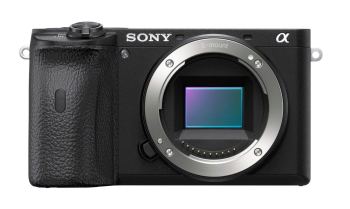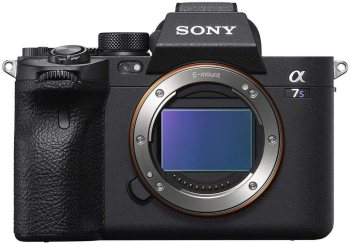- Excellent autofocus
- In-body stabilization
- Long battery life
- Exceptional video quality
- Outstanding low-light performance
- Robust build quality
- Limited lens selection
- Complex menu system
- No built-in flash
- Expensive
- Limited still photo resolution
- Heavy body
Sony Alpha 6600 vs Sony Alpha 7S III
When it comes to sony digital cameras, two models that often come up in conversations among photography enthusiasts are the Sony Alpha 6600 and the Sony Alpha 7S III. Both cameras are part of Sony's esteemed Alpha series, known for their exceptional image quality, advanced features, and versatility. In this comparison, we'll delve into the key differences and similarities between these two models to help you decide which one is best suited for your needs.
Sensor and Image Quality
The Sony Alpha 6600 features a 24.2-megapixel APS-C sensor, which provides excellent image quality with good low-light performance. On the other hand, the Sony Alpha 7S III boasts a 12.2-megapixel full-frame sensor, which offers even better low-light capabilities and a shallower depth of field. While the 6600's sensor is more than capable of producing high-quality images, the 7S III's full-frame sensor gives it an edge in terms of dynamic range and overall image quality.
Video Capabilities
Both cameras are capable of recording high-quality video, but the Sony Alpha 7S III is particularly geared towards videographers. It can record 4K video at up to 120fps, making it ideal for slow-motion footage and cinematic productions. The 6600, on the other hand, tops out at 30fps in 4K mode. Additionally, the 7S III features a variety of advanced video features, including S-Log3 gamma, HDR recording, and a built-in intervalometer.
Autofocus and Speed
The Sony Alpha 6600 features a fast and accurate autofocus system with 425 phase-detection points, making it well-suited for capturing moving subjects. The Sony Alpha 7S III, however, takes it up a notch with its advanced autofocus system, which includes 759 phase-detection points and real-time Eye AF tracking. This makes the 7S III particularly effective at tracking fast-moving subjects and maintaining focus in challenging lighting conditions.
Design and Ergonomics
Both cameras feature a similar design language, with a rugged magnesium alloy body and weather-sealing to protect against the elements. However, the Sony Alpha 7S III has a slightly larger and heavier build, which may appeal to those who prefer a more substantial camera. The 6600, on the other hand, is more compact and lightweight, making it easier to carry around for extended periods.
Price
One of the main differences between these two cameras is their price point. The Sony Alpha 6600 is generally priced lower than the 7S III, making it a more accessible option for enthusiasts and hobbyists. The 7S III, with its advanced features and full-frame sensor, comes at a premium price that may be out of reach for some budgets.
Conclusion
In conclusion, both the Sony Alpha 6600 and the Sony Alpha 7S III are excellent choices within the realm of sony digital cameras. While the 6600 offers great image quality, fast autofocus, and a compact design, the 7S III takes it to the next level with its full-frame sensor, advanced video features, and exceptional low-light performance. Ultimately, the choice between these two cameras will depend on your specific needs and priorities as a photographer or videographer. If you're looking for a more affordable option with excellent image quality, the 6600 may be the way to go. However, if you're willing to invest in a premium camera with advanced features and unparalleled low-light capabilities, the Sony Alpha 7S III is definitely worth considering.































